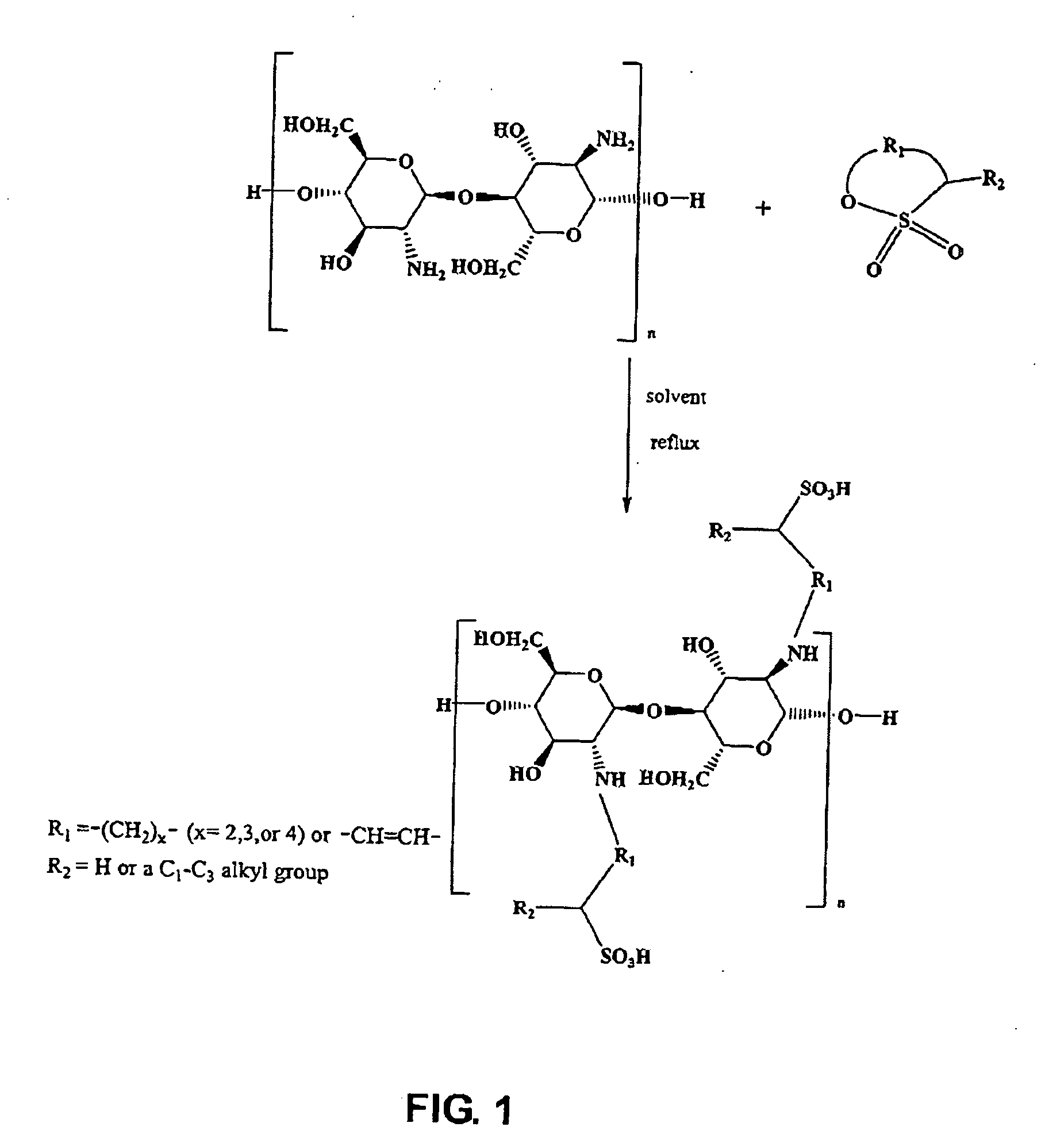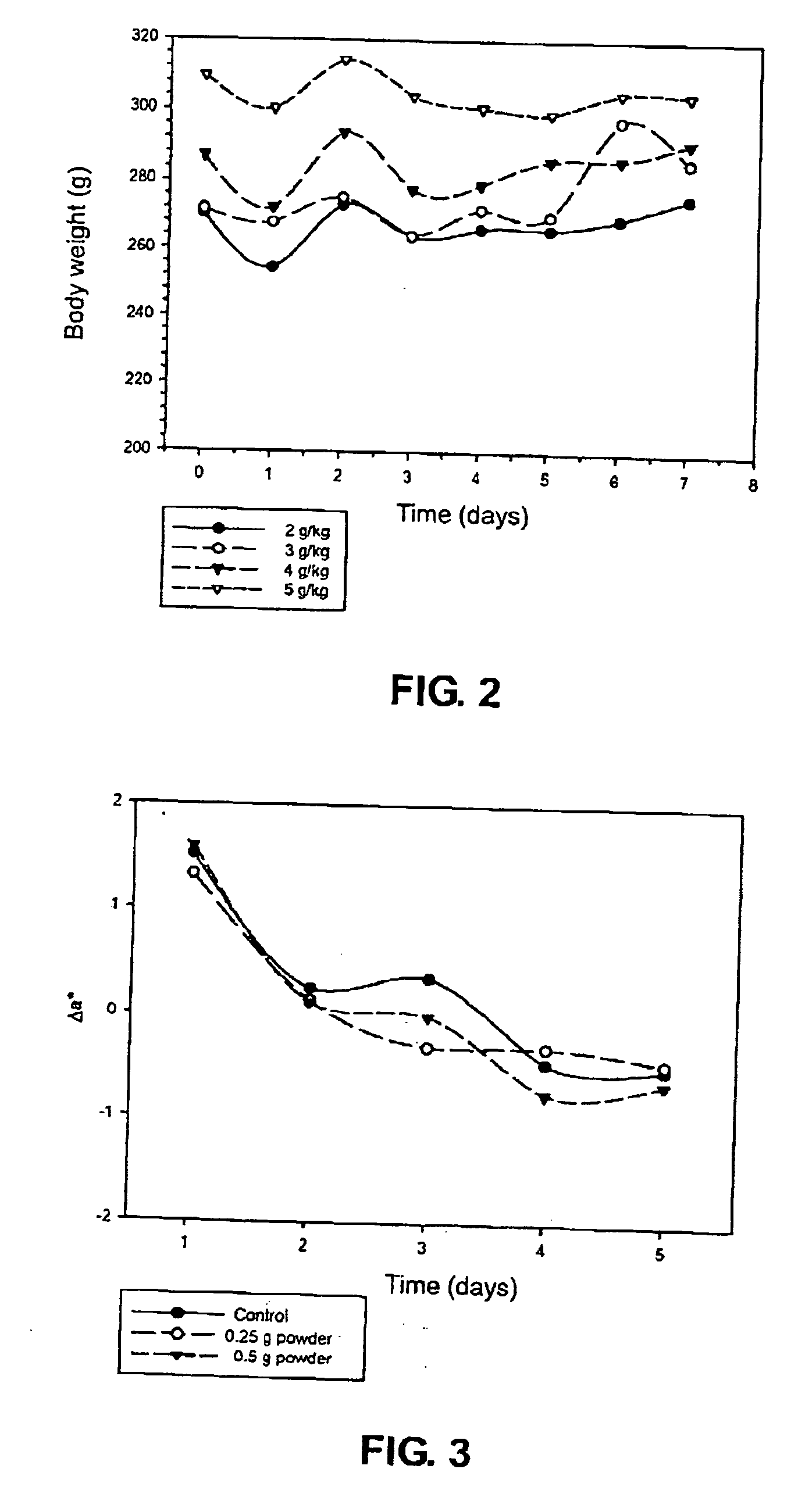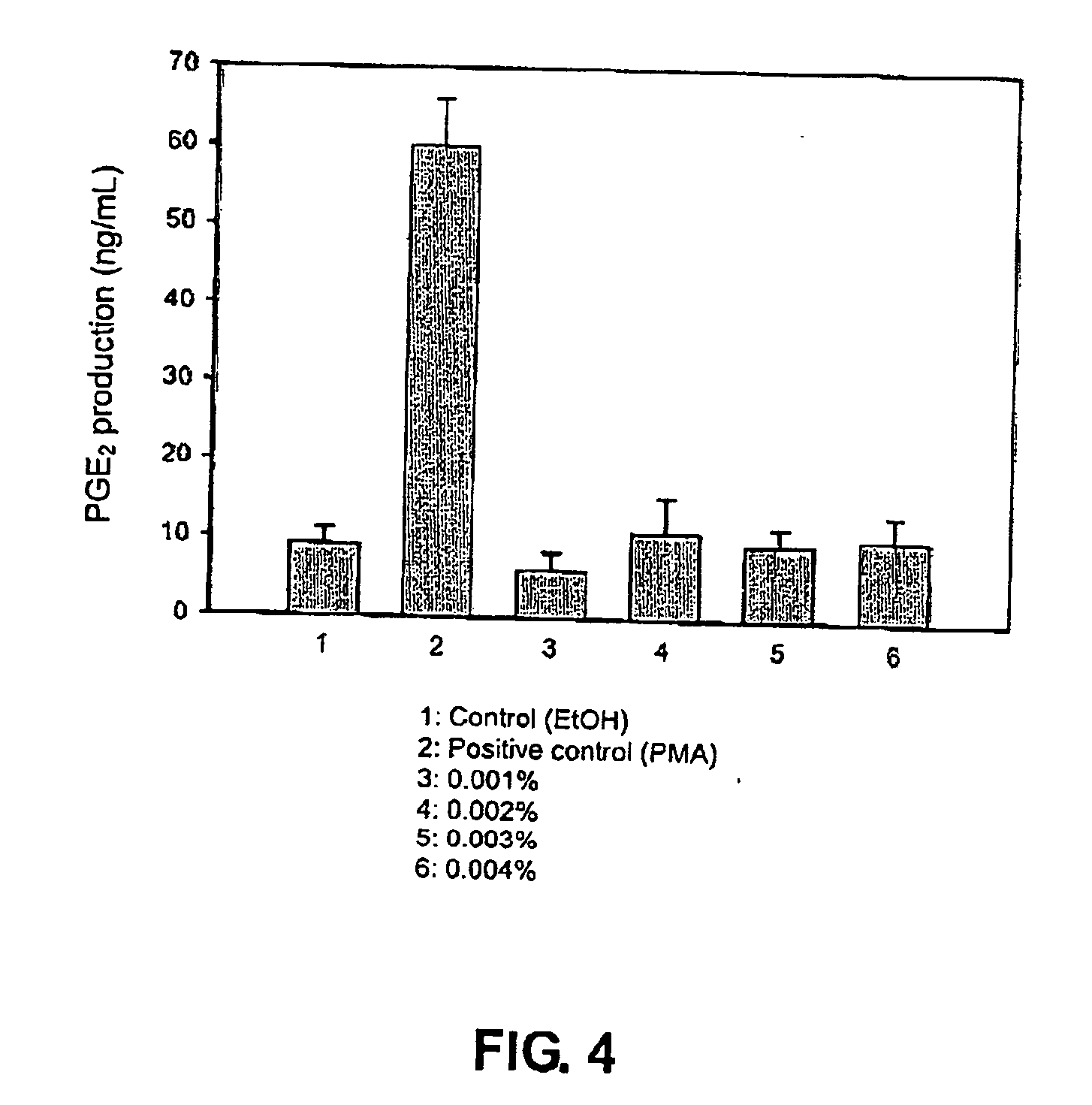Chemically modified polyaminosaccharide by a hydrocarbyl sultone compound
- Summary
- Abstract
- Description
- Claims
- Application Information
AI Technical Summary
Benefits of technology
Problems solved by technology
Method used
Image
Examples
examples
Reagents Used
[0112] In the following examples, unless otherwise indicated, chitosan with a viscosity average molecular weight of between 10,000 and 200,000 was used. The chitosan used in the following examples generally includes poly(D-glucosamine) with about 75% to about 85% deacetylation. 1,3-propane sultone or 1,4-butane sultone was used as the hydrocarbyl sultone compound. The solvent for reaction was methanol, n-butanol or methoxypropanol.
Comparative Ex.
Production of an Alkylsulfonated Chitosan by a Previous Method
[0113] In this example, alkylsulfonated chitosan was synthesized according to a previous method described in a 2001 master thesis, entitled “Study on the semi-IPN of sulfonated polyurethane and chitosan,” by Yung-Hsin Lin, Chemical Engineering Institute, National Taiwan University.
[0114] Six grams (g) of a chitosan powder (MW 140,000) was dissolved in 594 g of a 2 wt % acetic acid solution and filtered. The filtrate was placed in a four-neck flask and blanketed ...
experiment 1
Evaluation of the Anti-Microbial Effect of Chemically Modified Chitosan of this Invention
[0132] In this experiment, an alkylsulfonated chitosan produced according to an embodiment of this invention (a high MW chitosan sulfonated with 1,3-propane sultone) was compared with an un-modified chitosan in terms of anti-microbial effects.
[0133] A 48-well plate was used for the present experiment although only the first 24 wells were used. All wells had a total volume of 1 mL. The first well received only 0.5 mL of sterilized water and 0.5 mL of Luria-Bertani broth (LB). The second well received 0.5 mL of a 3 wt % alkylsulfonated chitosan solution (prepared in a 2 wt % acetic acid solution) and 0.5 mL of a bacterial or yeast culture, which was prepared by admixing 1 mL of an overnight bacterial or yeast culture with 100 mL LB medium. The third well received 0.5 mL of the same alkylsulfonated chitosan solution and 0.5 mL of sterilized water. After mixing, 0.5 mL of the resultant solution in...
experiment 2
Evaluation of the Toxicity and Weight Loss Effect of Chemically Modified Chitosan of this Invention
[0136] In this experiment, a powder of an alkylsulfonated chitosan produced according to an embodiment of this invention (a high MW chitosan sulfonated with 1,3-propane sultone) was used and mixed with animal feeds for oral administration to rats. A powder of an un-modified chitosan was also used as a control.
[0137] Twenty-four Wistar rats (7-week old) were divided into four groups. All rats were deprived of food overnight prior to commencement of the experiment. The four groups of rats were then respectively fed daily with the powder of the alkylsulfonated chitosan of this invention in different amounts, i.e., 2 g / kg, 3 g / kg, 4 g / kg and 5 g / kg, and the survival and body weight of the rats were monitored daily for 7 days. A powder of an un-modified chitosan was also used as a control.
[0138] This experiment was designed to determine the LD50 value (the amount that produced death in 5...
PUM
| Property | Measurement | Unit |
|---|---|---|
| Temperature | aaaaa | aaaaa |
| Temperature | aaaaa | aaaaa |
| Fraction | aaaaa | aaaaa |
Abstract
Description
Claims
Application Information
 Login to View More
Login to View More - R&D
- Intellectual Property
- Life Sciences
- Materials
- Tech Scout
- Unparalleled Data Quality
- Higher Quality Content
- 60% Fewer Hallucinations
Browse by: Latest US Patents, China's latest patents, Technical Efficacy Thesaurus, Application Domain, Technology Topic, Popular Technical Reports.
© 2025 PatSnap. All rights reserved.Legal|Privacy policy|Modern Slavery Act Transparency Statement|Sitemap|About US| Contact US: help@patsnap.com



